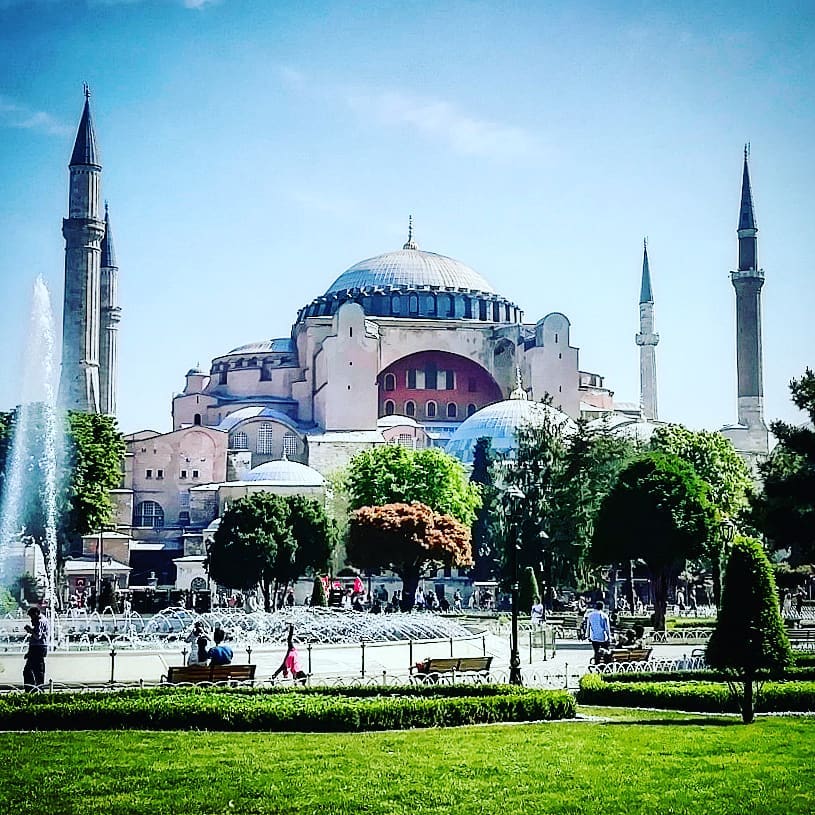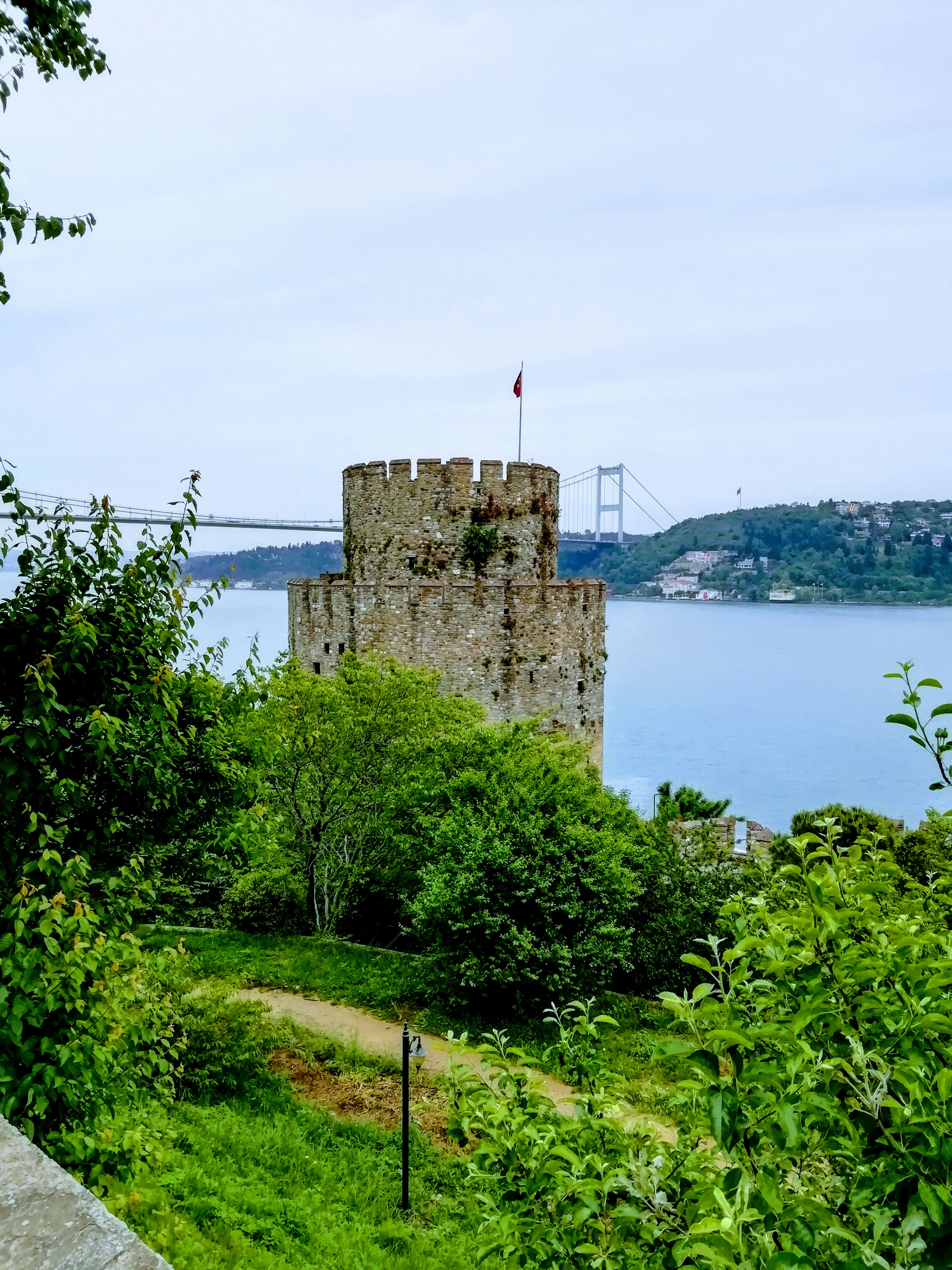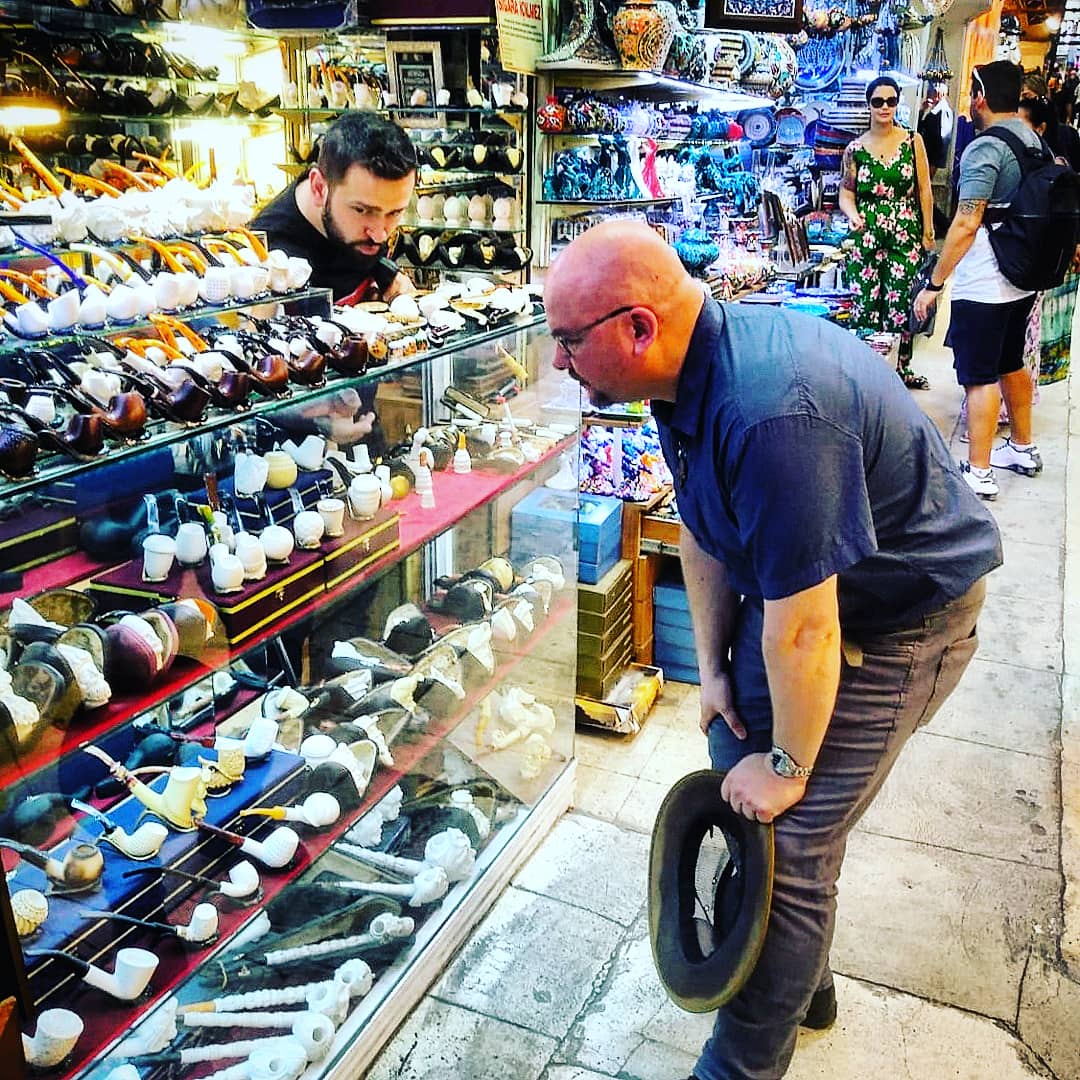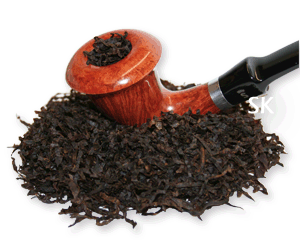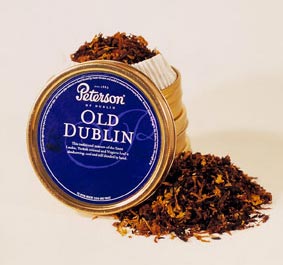For this year’s vacation Ellen and I were supposed to go to beautiful Burgundy, France. Already in January I rented a nice, rustic holiday house there where I (of course) could smoke inside. About a week before leaving I took a look at several weather websites and was not amused. Auwtsch, it was going to be rainy every day in Burgundy and even colder than in The Netherlands… I told Ellen and immediately her face became like the weather it was going to be. I don’t mind sitting inside somewhere for a week. There was a hearth, I could smoke, read etc. But Ellen needs to be able to go out, take long walks and she hates rain. Later that day she sneered that in Seville (where we have been before) it was going to be sunny and warm. Ok, that did it for me. I cancelled the holiday house and went searching for a location where the weather would be better. Seville was an option but we had been there before (twice) and the flight times were very inconvenient. Then I thought about a place I always wanted to visit, the eternal city on two continents (Europe and Asia), formerly known as Byzantium and Constantinople: Istanbul. It ticked all the boxes. It was going to be sunny and warm there, lots of things to do and see (after all I have a love for the (romantic) Middle East) and the flight was not too long. Ellen immediately said yes when I proposed it.
Day 1
In the train on the way to Schiphol Airport I closed my eyes and imagined I was on the once famous Orient Express. Which got me slightly annoyed because the evening before I had turned my tobacco closet upside down in order to find a tin of Cornell & Diehl Star of the East Flake (with beautiful artwork of the Orient Express with mosques on the background) I thought I had to take with me. Sadly I could not locate it so instead I went for a tin of Sutliff Bosphorus Cruise. Also very fitting. In the plane I already got in the Middle Eastern mood. Ellen and I were sitting in the same row but the seat in the middle of us was taken by a very handsome young Muslim woman, wearing elegant clothes and a headscarf. When we were up high in the blue sky the sun was scorching the aircraft, it became hotter inside. Suddenly the woman began taking off her first layer of clothing and then even a second. Out of respect I did not plainly look but in the corner of my eye I could see she was doing it in a way so that she retained her dignity as a Muslimah. She even did not remove her headscarf! And her odour.. She smelled like exotic spices mixed with only a hint of musky sweat. I am a bit ashamed to say this but it almost was an erotic experience. Later she fell asleep practically against my shoulder, so sweet.
When we arrived at Sabiha Gökçen Airport the best option to go to the hotel was to get a taxi. Sadly Turkish cab drivers are well known to try to scam foreigners. I wished there was an app like the Bluebird one I had in Bali where you could order a taxi, see which driver you were going to get, afterwards leave a review and get a mail in which you saw the route you drove and the amount of money you paid. We took the first cab we saw and crossed our fingers. Luckily taxis in Turkey are not expensive. The starting tariff is 4.50 Turkish Lira (± €0.65) and per km 2.50 Lira (± €0.35). I very roughly knew the route we had to take, the E80 highway to Istanbul, about 1 hour and 50 km to the hotel. After almost 1.5 hours, 73 km and going over some toll-road (which we of course also had to pay) we finally arrived at our destination: Hotel Dersaadet. Which I had picked because of good ratings/reviews and the central location in Sultanahmet, the old city. At the reception desk my foul mood about the cab-ride disappeared like a puff of smoke. We were welcomed warmly with a hot glass of apple flavoured çay (tea) and some Turkish delight sweets. If I had any stress left it went away when I later smoked a pipe on the panoramic roof terrace of the hotel with stunning views of the Sea of Marmara and the Asian side of Istanbul.
Day 2
We had a busy but exciting day ahead of us since we were going to visit some of the major old “highlights” of the city. Normally a long time before the trip I would have read everything I could find about the subjects in such a way that I was able to almost professionally guide Ellen and myself through them. But now I only had less than a week and besides, I am on holiday, come on, no need to extra pressure my brain there. So before we left via a tip from the hotel I booked a private tour guide for a day, the charming miss Didem Tan. We met in the morning in the hotel and she said “You are a rare breed nowadays. Very few Dutch come here now. These days it are more Russians and Asian people.” Which could be correct because on the streets we heard a lot of Russian and saw many Asians. The reason I kept more or less before me, politics is not a nice subject.. First on the to-go list was the ancient Hippodrome which is now called Sultanahmet Meydanı (Sultan Ahmet Square). Only a few fragments survive today under which the mighty Obelisk of Theodosius, the stripped Walled Obelisk and the mysterious Serpent Column, brought from the Temple of Apollo in Delphi. We came to Istanbul during Ramadan so the square was covered with wooden benches and tables where people could enjoy the iftar (the evening meal with which Muslims end their daily Ramadan fast) at sunset. Next was the Sultan Ahmed Mosque, better known as the Blue Mosque. I was really looking forward seeing it having recently watched the Turkish Netflix The Protector series where you see some great shots of the breathtaking building. Sadly the outside and especially the inside were under heavy renovation which totally killed any magical vibe. Almost nothing from the beautifully decorated ceiling and walls could be seen.
For me one of the highlights of the trip was seeing and visiting the magnificent Hagia Sophia. When I was a boy I had art class on high school and one of the subjects was architecture. There I heard the story of the building and saw pictures, which totally mesmerized me. Some of the perks of having a licensed private guide in Istanbul is than you can bypass waiting queues, which speeds up the process of visiting something tremendously. We were quickly inside and one of the first things you see is the large Emperor Door, which is said to have been made out of wood from Noah’s Ark, with above it a brilliant mosaic of Christ as Pantocrator. Then when you go over the molten wax looking doorstep you walk into the jaw-dropping building’s main space. Famous for its dome, huge nave, marble pillars (some come from the Temple of Artemis, one of the Seven Wonders of the Ancient World), gold mosaics and coverings of great artistic value. In fact it is so richly and artistically decorated (I also loved the two large alabaster Hellenistic urns that were transported from Pergamon) that I could easily understand why emperor Justinian proclaimed: “Solomon, I have outdone thee!” I won’t go further into describing Hagia Sophia, you just will have to see it for yourself. You won’t be disappointed.
Next on the list was the subterranean Basilica Cistern, which you can know from movies like From Russia with Love and Inferno. Normally you can see the mysterious mirror reflection of the 336 columns in the water but due to an ongoing renovation it was all dry.. Luckily the eerie, dark atmosphere, otherworldly Hen’s Eye column and the Medusa head column bases made up for it. Our bellies grumbled a bit so it was time for lunch. Didem directed us to the famous Pudding Shop (Lale Restaurant) where we had an ok meal. Personally I thought the food was not that great and the price was on the high side. Soon we were off to the last and biggest stop of the day, the enormous Topkapı Palace, the main residence and administrative headquarters of the Ottoman sultans. Having seen Muslim architecture at the Alcázar of Seville, Mezquita of Córdoba and the Alhambra in Granada (Ok, all examples of Moorish architecture, not Ottoman architecture, but nonetheless..) my expectations were almost off the scale. Skilfully we were guided by Didem through the vast complex. Renovation seemed to be a keyword here also because parts of the Harem and Imperial Treasury were closed. Damned, I really wanted to see the famous Topkapı Dagger, the ebony, walnut and gold-plated thrones, the valuable Spoonmaker’s Diamond etc. etc. Oh well.. Despite that there was more than enough to look at. Like the Pipe Room of the Tressed Halberdiers (consisting both of servants used to provide general services to the palace and the Harem and of soldiers forming a part of the sultan’s household troop) where puppets with chibouk pipes were placed. Of course the Imperial Hall was impressive with all the beautiful decorations under which blue-white Dutch ceramics. One of the strangest rooms was where the relics were kept. There the Qur’an was being recited continuously by a mufti and you went like “Oh, there’s Moses’s Staff, and there David’s Sword, oh, a footstep, tooth and hair from Muhammad!” It all felt a bit unreal walking past those legendary relics.
After the tour we were knackered but satisfied, Didem did a great job. Later that evening we went out or dinner. One of the downsides of being in the heart of the tourist district is that there are many (often foreigner catered) places to eat who range from “mwah” to “ok”. A good one is hard to find and an excellent one, well, don’t make me laugh. Ellen and I walked some streets away from our hotel when on a corner we saw a nice looking restaurant with a small terrace beside it called Lale Sultan. Being tired from a day of sightseeing we decided to look no further and sit down there. And boy that was a good choice! The owner Mehmet and staff were friendly and with everything we ate we had something like, whoah, that’s tasty! On top of that we got a free dessert, çay and a trinket that wards off the evil eye. Needless to say that most of the other nights we went there. Afterwards I wanted to go for a nargile (waterpipe). Just past the Lale Sultan there was a café where we could sit, drink and smoke. It took a while for the staff to prepare the nargile but then I was in for some Middle Eastern smoking heaven. And not only me, even Ellen enjoyed it a while, a rare sight! Smoking a nargile is not that different from smoking a pipe. Once you get into a rhythm the (apple-flavoured) smoke comes evenly. After an hour of smoking I felt the nicotine creep up and we decided to go. Apparently an hour was a short time because when we had walked away I looked back and saw the staff enjoying the nargile I paid for. Oh well…
Day 3
The weather was a bit more clouded but ideal for a Bosphorus cruise! Ilhan from the hotel reception had it arranged together with me, very handy. I don’t like boats (seeing a boat passing by already makes me seasick) but Ilhan assured me it would be ok. At the end of the morning we were picked up by a small bus with other tourists, mainly noisy Russians all wearing the same “Istanbul” shirt. At the harbour we waited for the boat until we heard some music in the distance which quickly grew louder. It turned out to be our ship with hip Turkish techno music blasting at full volume out of the speakers. So far for my romantic idea of a quiet Bosphorus cruise. On the boat the noise luckily was turned down and the guide took over. With a funny accent he told us all about the sights we saw on the river banks. And I have to say, it was a relaxed trip, no sea sickness and the breeze was refreshing. There also was a photographer who took pictures of all the passengers. I got a bit suspicious (Didem told us that Turks never actually steal your money but certainly try to hustle it out of you) but Ellen thought it was fun. So to the amusement of an elderly Asian couple beside us (I already noticed in Bali that for some reason Asians find my fat bald head hilarious) we posed in all kind of manners.
After a while we moored at a jetty so we could visit the mighty Rumelihisarı fortress. The complex was commissioned in preparation for a planned Ottoman siege on the then-Byzantine city and build in only 4 months and 16 days. All by all it was nice to see and after some climbing the views were very good but to me it was not really noteworthy. Back in the boat the photographer approached us again. In the time that we visited Rumelihisarı he had printed out all the pictures he took and put them in a book which he gave us to see and moved to the other tourists. The photos were good but not that good that I would buy one. So I quickly took some snapshots of them with my smartphone. Later when the photographer came back I understood that 1 picture would cost us €7. €7!!! I can have a full meal for that money in Istanbul! I declined and did not feel like bargaining. But he had seen me taking pictures of the photographs and insisted I deleted those from my phone. Which I did, I showed it to him. What he did not know was that after I delete a picture it is saved for 30 days on my phone. Hah! I hustled the hustler! Don’t feel sad for the man, he sold many pictures to the noisy (and quickly getting pissed drunk) Russians. In the end when we had some more time to look at the snapshots we did not like a single one and I permanently deleted them all.
When the cruise was done we were dropped off near the Spice Bazaar. In one of the streets there we had a tasty lunch consisting of a dürüm filled with döner kebab and some veggies and my first Türk kahvesi (Turkish coffee) of the trip. After that we went looking for the enormous Grand Bazaar because I wanted to buy some Meerschaum pipes. Finding the “covered market” is not too hard, just go towards the omnipresent Süleymaniye Mosque and almost directly beside it the bazaar is located. It was a weekday, Ramadan, but still the narrow streets and alleyways were bristling with activity. I had found a Meerschaum Pipe shop in the bazaar on internet but navigating there was a different story. I discovered that Google Maps did not really work in the covered market..
After some walking and watching at all kinds of displayed wares I knew I was getting close. One of the salesmen saw I was looking for something and approached me so I asked him where the Meerschaum shop was. “Aaahhh, Meerschaum! Over there!” He pointed to a nearby small shop, basically a glass desk with some glass shelves behind it all filled with indeed, Meerschaum pipes. Not the one I was looking for but ok. When I asked Didem before about buying things in the bazaar she said to first compares prices if you wanted to buy something. Fine, I was not going to purchase anything there, I was just going to ask how much the pipes were. I had to buy 2, one for myself and another for pipe-smoking friend Mark who knew I was going to the Grand Bazaar. The salesman showed me some fine high quality block Meerschaum examples and I picked out 2. One beautifully decorated with a silver rim for me and one “golf-ball lookalike” for Mark. He gave me a price, saw my face and immediately made a “special” price. I calculated a bit in my head and thought “Fine, I now roughly now the prices.” I thanked the not so happy man (no one likes to see a customer go) and said I was going to look elsewhere.
A few turns later I finally found the shop I was looking for, but no one was there. The guy opposite it had the number of the salesman and called him. Soon he came and let me see his pipes. Some were very beautiful but all or too big or too small. In the end he smiled and asked me to follow him. “Ok, probably we go to his storeroom or something like that.” I thought. After some more turns I had to laugh out loud because he led me, and was pointing at, the first shop I visited where the salesman was grinning diabolically. Of course I had to then haggle down his “special” price. After a while of going back and forth I gave him my final amount. Nonono, I can’t do that, thisthatsuchandsuch etc. Fine, I shook his hand again and walked away. “Hooo!” I heard behind me “When I shake hands with someone that means the deal is done, I accept your price.” Yesssss!!! While feeling high from the bargain I was almost literally pulled in the shop of another vendor, his business was scarves. By chance I was looking for a light, summer one. I am not sure what happened then, it is all a bit blurry, but in the end I walked away with an in my eyes beautiful scarf and an annoyed Ellen who said I paid way too much and that I should have listened to her…
Click here for part 2 in which I visit the Istanbul Pipe Club.




